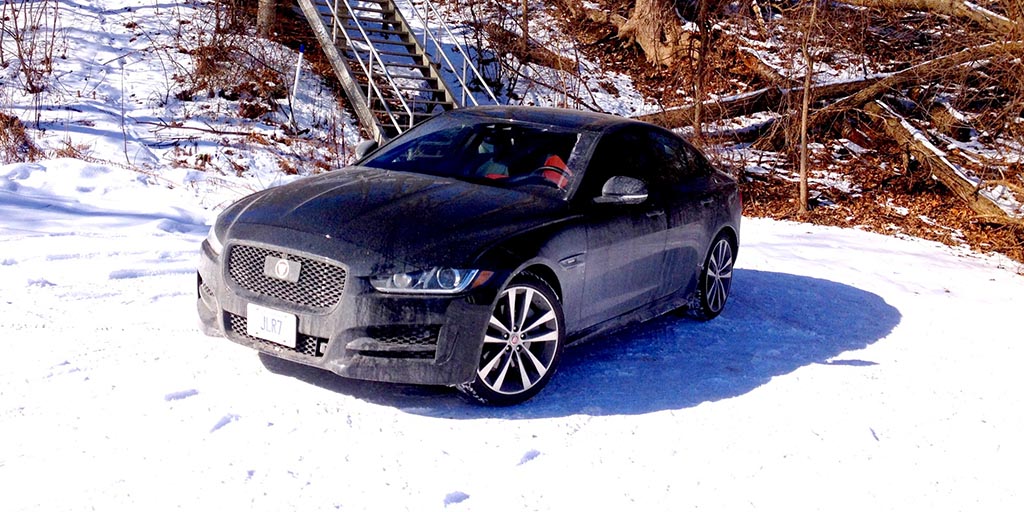Motoring: A new diesel powered vehicle: 2017 Jaguar XE 20d and XF 20d
 CREDIT: JAGUAR'S XE AND XF SEDANS ARE SLEEK, LUXURIOUS AND DIESEL-FUELED IMPROVED MODELS WITH ONLY FEW SHORTFALLS, MAKING IT WORTH THE PURCHASE.
CREDIT: JAGUAR'S XE AND XF SEDANS ARE SLEEK, LUXURIOUS AND DIESEL-FUELED IMPROVED MODELS WITH ONLY FEW SHORTFALLS, MAKING IT WORTH THE PURCHASE.NAUMAN FARROOQ
If you've been living in Europe for the past two decades, finding the word diesel next to the word Jaguar is quite common, but that has surely not been the case in North America. However, for 2017 and beyond, that's all changing. Step into a Jaguar Land Rover (JLR) showroom and you'll find diesel-powered vehicles in all shapes and sizes. The big news at Jaguar, apart from diesel-powered vehicles, is the arrival of their much anticipated, mid-size sedan, the XE. This is the first Jaguar offering in this segment since the X-Type bowed out in 2009.
Unlike the old X-Type, the XE is not based on the platform of some pedestrian sedan, made by a mass-market manufacturer. The XE is on an all new platform, which is also being shared with the Jaguar F-Pace SUV. Thanks to this all-new platform, Jaguar had the freedom to do a car the way they wanted to, rather than make do with what's available. Hence, the XE has taut proportions, yet a reasonably spacious interior and a capacious trunk. Just because this is the entry-level Jaguar Sedan, doesn't mean it's a let down on luxuries. The XE can be had with pretty much all the gadgets you desire such as headsup navigation, adaptive cruise control, a premium 825 watts Meridian sound system and a modern and user-friendly infotainment system.
So, a competent platform, but what about the engine?
While the XE is available with a supercharged 3.0 litre V6, the one everyone is interested in, at the moment, is the turbocharged 2.0-litre inline-four cylinder diesel. This motor produces 180 horsepower and 318 pounds per foot of torque. Couple that power with a quick shifting, eight-speed automatic gearbox, and you've got yourself a car that is much quicker than you expect, zero to 100 kilometers per hour in 7.9 seconds, top speed is electronically limited to 225 kilometres per hour, this is a sporty diesel sedan.
For Canada, the XE also has allwheel drive as standard, so no matter what Mother Nature has in store, it will get you to your destination. It also handles well. Not only does the XE benefit from a stiff chassis and good suspension geometry, but its all-wheel drive system is also smart. Not only can it vary torque between the front and rear axle, depending on the conditions, it can send 90 per cent of the power to either end of the car. It also features torque vectoring, which on this vehicle is not mechanical, but based out of its braking system. Clever stuff, but I know that the question most people have regarding anything diesel powered is its fuel economy, so how did the 2017 XE diesel do? In one word, spectacular. On the highway, I had averaged 5.7 litres per 100 kilometres and the end number was just 6.9 litres per 100 kilometres. So, the 2017 XE is quite a nice car and it is economical, but it's not perfect.
First of all, on the highway, it isn't as quiet and refined as you'd want it to be. I also wish its electronic power steering system offered more feel. While its new “Pro” infotainment system is a vast improvement over Jaguar's older system, which is still offered on base trim, it is still a touchscreen unit, which means that it is a bit tricky to use on the move. I will say, this “Pro” touch screen reacts far faster than any other such unit, so, well done JLR. The 2017 XE is priced decently, too. Base price is $45,000, while my well optioned, diesel R- Sport model had a sticker of $65,000. It's not cheap, but then again you get a lot of car. If you want even more from your car, than you better pony up a bit more dough so you can get into the 2017 Jaguar XF diesel sedan. Mechanically, the XF diesel is identical to the XE diesel which means, it also has a turbocharged 2.0 litre inline-four cylinder motor that develops 180 horsepower and 318 pounds per foot of torque. Power also goes to all wheels via an eight speed automatic gearbox. I also thought the lighter XF was more agile and had a sharper turn in as you enter a corner. On top of all that, the XF diesel is much more refined and quieter than the XE, especially on the highway, so if you do a lot of long distance travel, you'll prefer the XF. As you'd expect, the larger XF will cost you a bit more to buy, pricing for the F-Pace 20d AWD model starts at $60,000, a few premium options will easily nudge that figure towards $75,000. Surprising, the XF diesel also cost a bit more to run, as I averaged 7.8 litres per 100 kilometres in my test week. Both these new Jaguar sedans are wonderful and would make their owners really happy. So, if you're looking for a premium luxury sedan that also sips fuel, than you're due for a visit to your local Jaguar retailer.














